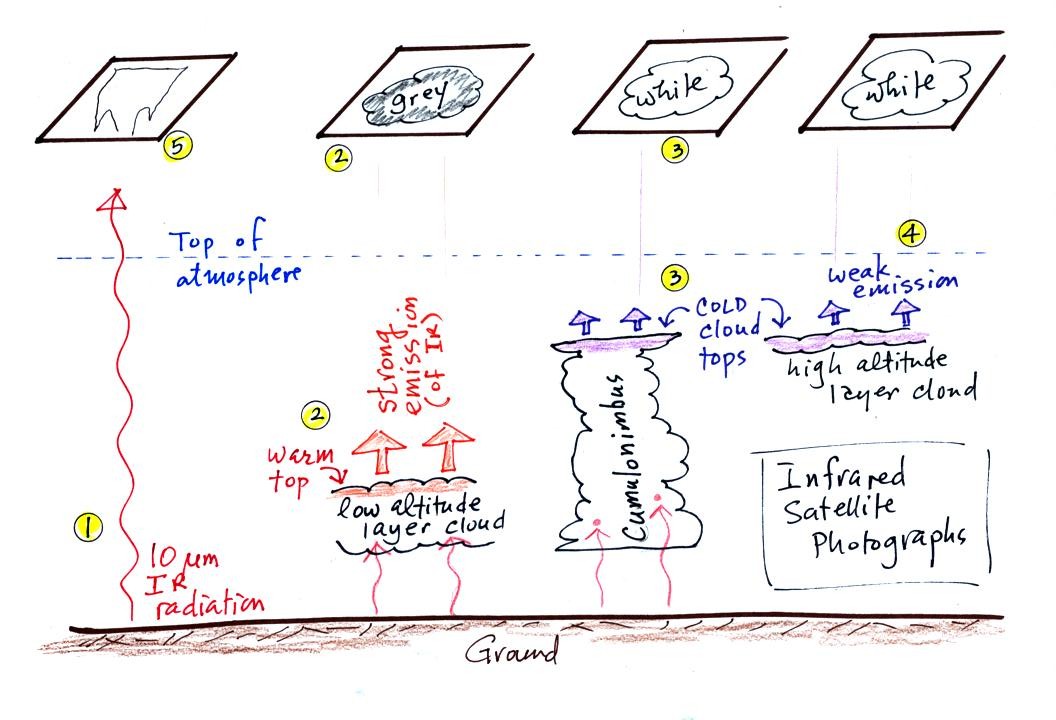
Question #1 -
Name the low altitude layer cloud and the high altitude layer cloud in
the figure above.
The low altitude layer cloud is a
stratus cloud, the high altitude layer cloud is a cirrostratus cloud.
Question #2 - On an IR satellite photograph, the ground will often
change from dark grey or black to light gray during the day. The
ocean nearby won't change at all. Why does the ground change
color but not the ocean?
First of all the changing "color"
caused by changes in the temperature. The ground is dark grey or
black in the afternoon when the ground is warmest. As the ground
cools it turns lighter grey. It is coolest in the early
morning. The ocean has a much higher specific heat and doesn't
warm much during the day or cool much at night. The daily range
of temperature on land is much higher than the ocean surface
Questions #3 - Why are high altitude
clouds thin?
Mainly because the high altitude air cold. Cold air can't contain
as much water vapor as warmer lower altitude air. There isn't as
much of the raw material needed to make clouds at high altitude.
Questions #4 - Which two of the 10
main cloud types is capable of making precipitation?
Nimbostratus and cumulonimbus (thunderstorm) clouds.
Question #5 -
How many 20 um diameter cloud droplets would you need to make one 200
um
diameter drop of drizzle?
The drizzle drop is 10 times
wider, 10 times deeper from front to back, and 10 times taller than the
cloud droplet. Thus it would take 10 x 10 x 10 = 1000 cloud
droplets to make one 200 um drizzle droplet.
Question #6 - What is the flat top
of a thunderstorm cloud called? What is the lumpy cloud sometimes
found on the underside of a thunderstorm anvil cloud?
The flat top is called an anvil. Mammatus is the lumpy stuff
found on the underside of the anvil

